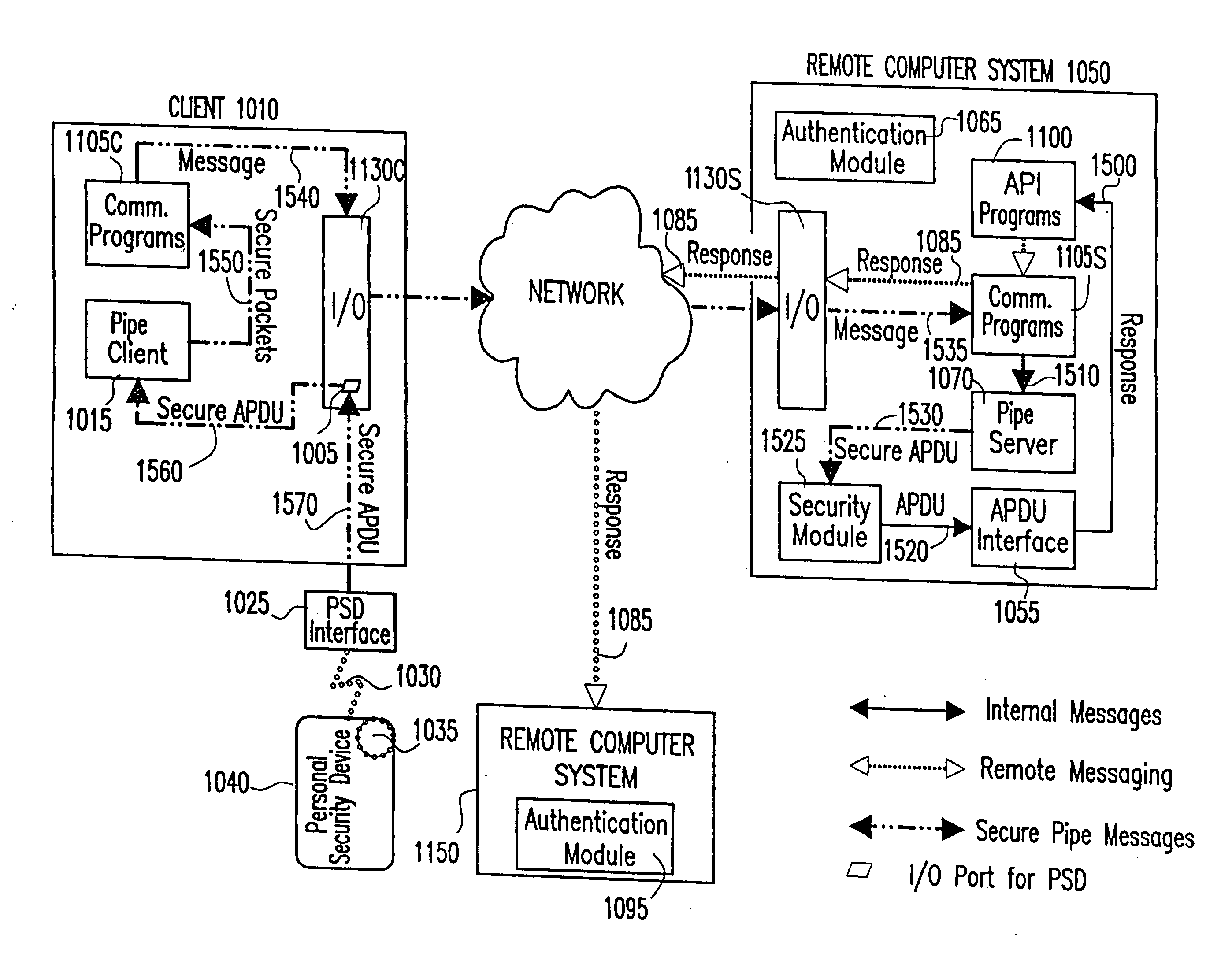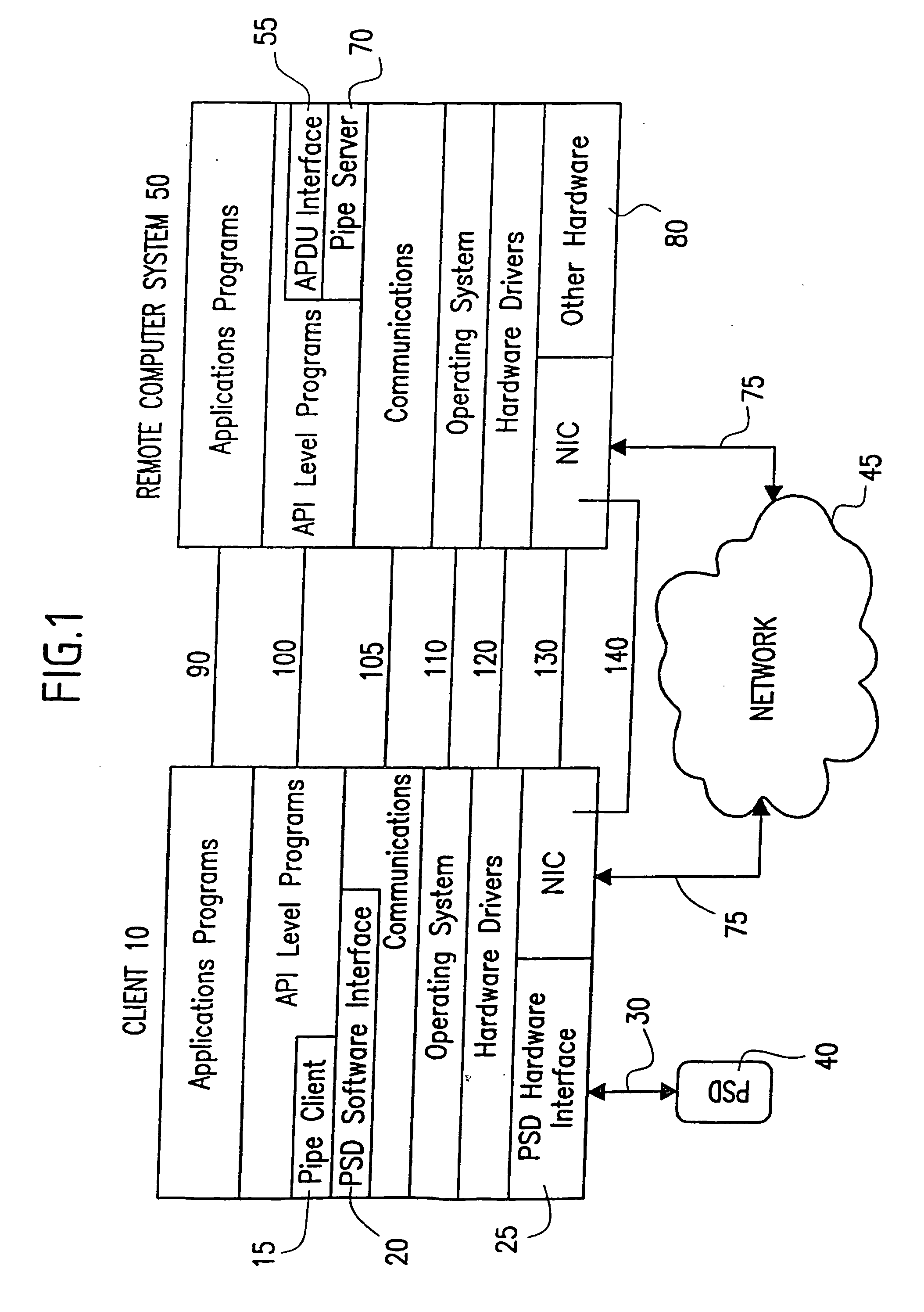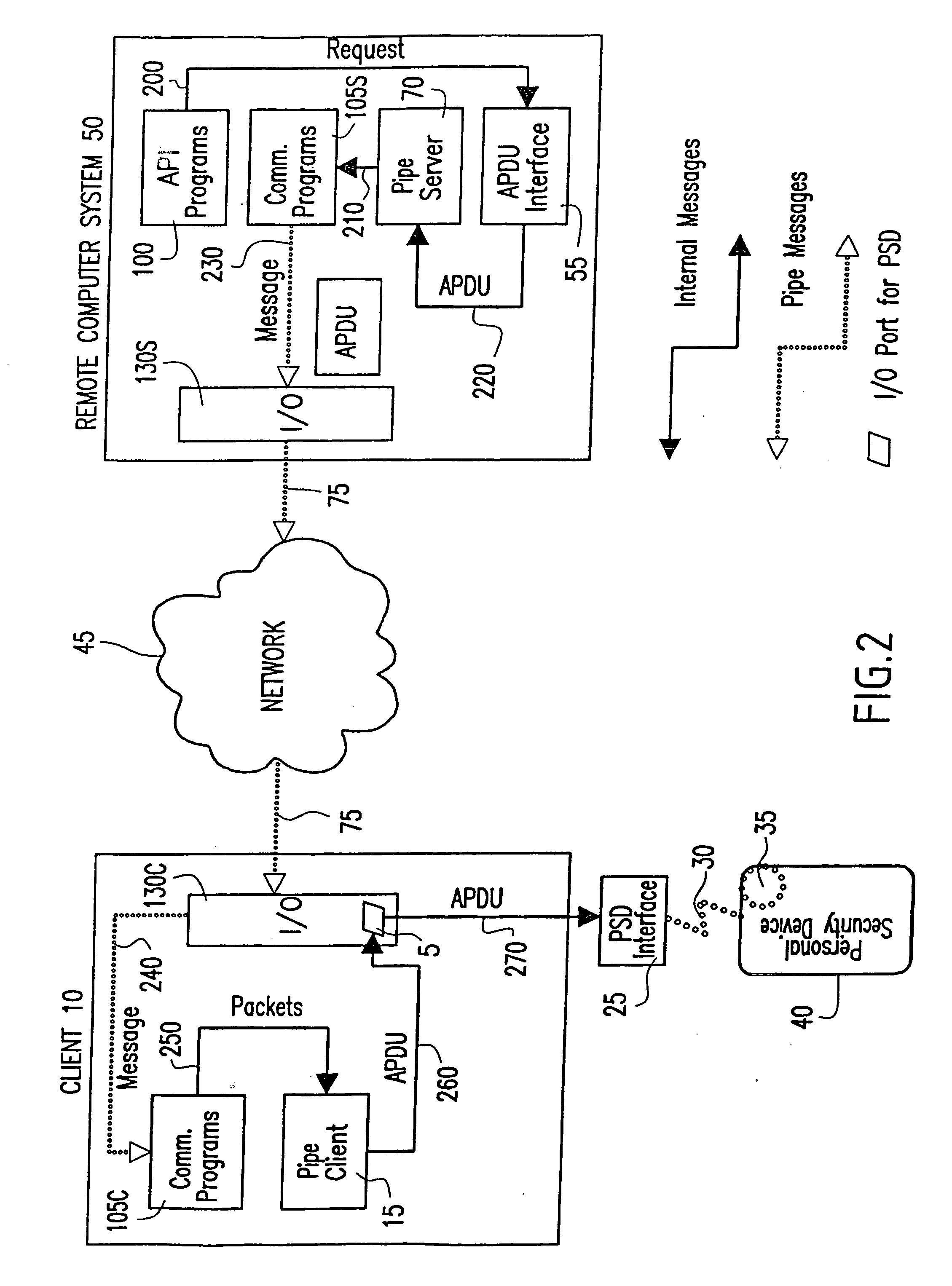Method and system for authenticating a personal security device vis-a-vis at least one remote computer system
a technology for personal security devices and computer systems, applied in digital transmission, data switching networks, instruments, etc., can solve problems such as inefficient ties up of network resources, inability to authenticate at least one location, and potential compromise of localized authentication transactions
- Summary
- Abstract
- Description
- Claims
- Application Information
AI Technical Summary
Benefits of technology
Problems solved by technology
Method used
Image
Examples
first embodiment
5.2.1. First Embodiment of the Invention
[0106] Referring to FIG. 8, to establish a secure hub, a Client 1010 causes an authentication challenge to be generated on a Remote Computer System 1050, by requesting access to secure functions or data over a network 1045. Upon receiving the request from Client 1010, the Remote Computer System 1050 generates an authentication challenge 1205 within a secure domain designated as authentication routine 1065. The authentication challenge is processed by an API level program 1100 and routed 1200 to an APDU interface 1055 for translation into an APDU format. The APDUs are then sent 1220 to a Security Module 1225 for encryption. The encrypted APDUs are then routed 1230 to a Pipe Server 1070 for encapsulation into outgoing messaging and sent 1210 to the Communications Programs 1105S for transmission over the communications pipe 1075, through the network 1045 into the network interface 1130C of the Client 10. The incoming messages are then routed 1240...
second embodiment
5.2.2. Second Embodiment of the Invention
[0117] Referring to FIG. 12 depicts an alternate embodiment of the current invention where the Remote Computer System 1050 transfers copies of the PSD credentials C 1035, if not pre-existing on said Remote computer System 1050. To perform credential transfer, an initial authentication transaction is performed by the Remote Computer System 1050 as previously described. Following authentication, additional commands are sent by the Remote Computer System 1050 to transfer the specified credentials.
[0118] The credentials are generated using a pre-established cryptography method and sent in APDU format from PSD 1040 through connection 1030 and into PSD interface 1025. The PSD secure response is then routed 1670 through hardware device port 1005 and sent 1660 to the Pipe Client 1015 for processing and encapsulation. The resulting message packets are then sent 1650 to the Client-side Communications Programs 1105C for processing, encryption using a pr...
PUM
 Login to View More
Login to View More Abstract
Description
Claims
Application Information
 Login to View More
Login to View More - R&D
- Intellectual Property
- Life Sciences
- Materials
- Tech Scout
- Unparalleled Data Quality
- Higher Quality Content
- 60% Fewer Hallucinations
Browse by: Latest US Patents, China's latest patents, Technical Efficacy Thesaurus, Application Domain, Technology Topic, Popular Technical Reports.
© 2025 PatSnap. All rights reserved.Legal|Privacy policy|Modern Slavery Act Transparency Statement|Sitemap|About US| Contact US: help@patsnap.com



